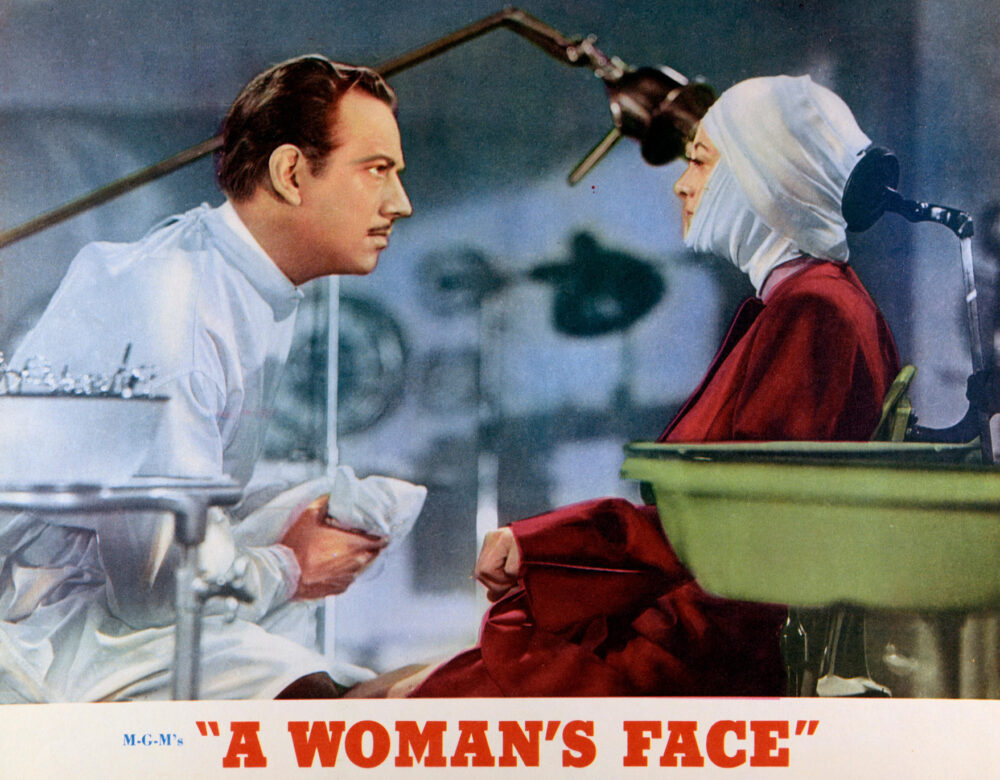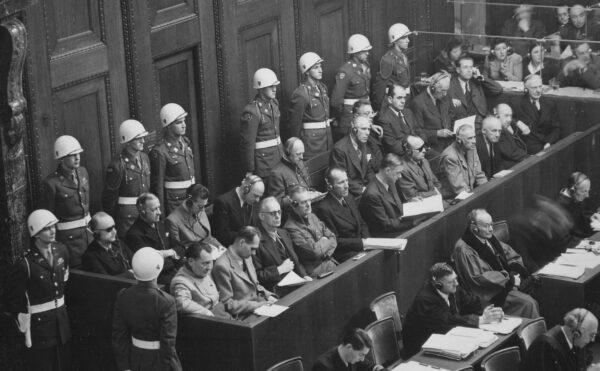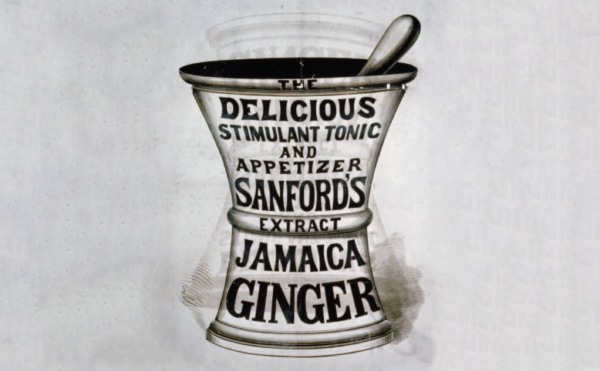How we look has significant impacts on how others treat us; this “beauty bias” applies to people who have been imprisoned, too. One doctor decided to perform countless plastic surgery operations in the name of preventing recidivism.
About The Disappearing Spoon
Hosted by New York Times best-selling author Sam Kean, The Disappearing Spoon tells little-known stories from our scientific past—from the shocking way the smallpox vaccine was transported around the world to why we don’t have a birth control pill for men. These topsy-turvy science tales, some of which have never made it into history books, are surprisingly powerful and insightful.
Credits
Host: Sam Kean
Senior Producer: Mariel Carr
Producer: Rigoberto Hernandez
Associate Producer: Sarah Kaplan
Audio Engineering: Rowhome Productions
Transcript
All she wanted was to look normal. When Suzanne, a pseudonym, was a little girl in Canada, her nose got crushed in a car accident. She grew up with scars and dents on her nose that left her horribly self-conscious. She felt she never fit in.
Around age 18, she started using drugs, and eventually began stealing to support her addiction. She ended up in prison in the 1950s near Vancouver.
She made the most of her time there. She took classes on typing and English grammar. She entered drug counseling. But however useful, these services couldn’t fix her main source of distress—her scarred nose.
One day, however, the woman heard about a doctor at the prison—a plastic surgeon who was operating on inmate’s faces for free. His name was Edward Lewison, and he had some unorthodox ideas about crime.
Namely, that scars and facial deformities marked people as social outcasts and that this rejection then drove people into crime.
As you can imagine, Lewison’s ideas proved controversial, both within medicine and society at large. He was challenging accepted ideas about human nature, morality, and justice. And partly because of those controversies, Lewison’s work has all but disappeared from history.
But the thing is, even today, no one knows whether Lewison was right. Like it or not, conventionally attractive people do have big advantages over the rest of us schlubs. As wild as it seems, Lewison might have been correct in declaring that the fastest way to fix some criminals is to fix their faces.
Edward Lewison grew up in Toronto and became a doctor in the 1930s. He served as a military physician overseas during World War II, then settled in Vancouver to do plastic surgery.
In 1953, he started providing free medical care at a prison in Vancouver named Oakalla. The prison sat near a lovely lake with deer. But it had a reputation as crowded and dirty.
It’s not clear when the idea first occurred to Lewison. But he noticed a lot of facial anomalies among the inmates at Oakalla. Broken noses, scars, gnarled teeth, deformed ears, things like that. And at some point, Lewison decided that perhaps those features had driven people into crime.
Theories linking looks and criminal behavior were not new. A century before, an Italian doctor and eugenicist named Cesare Lombroso promoted the idea that certain features marked people as criminals—jutting jaws, sloping foreheads, big ears. He believed those features revealed a reversion to a savage, ape-like ancestor with no impulse control. Lombroso even boasted that he could pick criminals out from photographs alone.
Lombroso’s theories had been debunked by the 1950s, but their influence lingered on in Lewison’s idea that facial defects pushed people into crime—especially defects in children.
His thinking was this: if a child has scars or other deformities, that might make them a social outcast. Kids can be cruel. In Lewison’s words, these outcast children would be “barred from the normal community of man.” They might then use crime as a “way of getting even with … society.”
Lewison admitted this idea had a sort of fairytale logic to it. After all, the villains in fairytales are usually scarred and ugly. But he argued that his intervention could work. So he began performing plastic surgery at Oakalla.
Frankly, Lewison’s commitment seemed a bit lackadaisical at first. He’d wander in a few mornings per week, do some nose jobs, then take the afternoon off to play golf. But he soon noticed striking changes in his patients. Like Suzanne, the woman whose nose got crushed in a car accident, then began abusing drugs.
According to Lewison, after her nose job, Suzanne became sunnier and got along better with guards. After being released from prison, she reunited with her husband and settled down to a stable life, without drugs or crime. As Lewison said, “She regarded the operation as a significant step towards becoming socially acceptable.”
Lewison was so impressed with this and other cases that he designed a formal scientific study. He wanted to determine whether plastic surgery could lower rates of recidivism and keep people out of prison after their release. He ended up performing 450 operations over ten years. Mostly nose jobs, but he also reconstructed ears, removed scars, and rebuilt crooked jaws.
He wrote up his results in a 1965 paper. It began with a quote from Shakespeare’s Richard III:
“That am curtailed of this fair proportion,
Cheated of feature by dissembling nature,
Deformed, unfinished, sent before my time
Into this breathing world scarce half made up,
And that so lamely and unfashionable
That dogs bark at me as I halt by them[…]
And therefore, since I cannot prove a lover
To entertain these fair well-spoken days,
I am determined to prove a villain.”
Ominous stuff. But then Lewison revealed his results. Forty-two percent of his 450 patients eventually got arrested again after their release and returned to prison. In contrast, 75 percent of former inmates overall returned to prison after their release—a difference of 33 percentage points. The experiment seemed like a huge success!
At least, on the surface. In the paper, Lewison admitted finding a disturbing trend. Some patients were emboldened by their newly handsome faces. After being released, they gave up violent crimes like robberies and became scam artists. Perhaps their newly handsome faces made people trust them more—and they took full advantage.
There were also other, more fundamental problems with Lewison’s study.
First, in comparing how often his patients returned to prison, he used the general prison population as a control group. But that population differed from his patient group in key ways. Most importantly, Lewison operated only on those people who’d committed five or fewer crimes, since he thought they’d benefit more. In other words, he left out the people who committed the most crimes and were therefore more likely to end up in prison again later.
Second, Lewison did not select his patients randomly. They sought him out and had to ask for the surgery. In doing so, they showed initiative and motivation—two traits that can help people turn their lives around and avoid falling back into crime.
Third, Lewison did not control for psychological factors. Sadly, many inmates at Oakalla had grown up in dysfunctional homes. Many were also poor and could not afford medical services. Some had probably seen a doctor only a few times in their entire lives.
Then, suddenly, a prominent surgeon began treating them. For free. He was listening to their stories, offering them medical advice. This was an act of real kindness in lives that had seen far too little kindness. Lewison’s attention alone—showing that he cared—might have motivated his patients to change their lives all by itself.
Related to that, some of his patients probably felt grateful afterward and wanted to pay the kindness forward. This could make them better members of society and help them avoid committing crimes. Their new faces might have been only incidental.
Finally, in addition to seeking surgery, some patients in the prison were educating themselves and improving their lives in other ways. Remember, the young woman whose nose got smashed up was taking classes on typing and grammar: things that would help her get a job later. She also entered drug counseling. So was it really the surgery that changed her life or those social services?
Overall, these flaws seriously undermined Lewison’s study. They made it impossible to conclude whether plastic surgery per se kept people out of prison. His patients might have been less likely to relapse anyway, and the counseling and simple human kindness they received might have played a bigger role.
To address these problems, another, similar study began in New York in 1966. This one used much stronger experimental methods.
In this case, a trio of doctors randomly screened 1400 inmates at Sing Sing prison. They selected 663 for surgery and divided them into four groups. The first group received only plastic surgery. The second received only social services like vocational training and counseling. The third received both surgery and social services. The last received nothing at all, as a control. Within each group, the doctors also sorted patients into those who abused drugs and those who had not, for an additional variable.
Unfortunately, the results of this experiment were messy. I don’t want to bombard you with too many numbers, but consider a few results.
Among drug-users, those receiving both surgery and social services ended up back in prison at a rate of 50 percent. Those receiving only social services were locked up again at a rate of 48 percent. Given how close those numbers are, 50 versus 48, that suggests the surgeries did not do much.
Except, among non–drug users, things were different. Those who received only surgery ended up back in prison at a rate of 30 percent. Those who received social services alone were at 89 percent. Which doesn’t make a ton of sense. Surgery did nothing for non-drug users, but somehow really helped people who used drugs? And why would counseling make people not struggling with addiction far more likely to wind up back in prison?
Plus, even this study couldn’t eliminate all the confounding psychological factors. For instance, consider those who were enrolled in the study and got their hopes up for surgery. Then the doctors show up and tell them they’re getting only social services—or nothing at all. That would make me pretty angry! Yet another rejection in life. And that anger could cause them to lash out at society and revert to crime to ease their pain.
Overall, it’s hard to know what to make of these studies. In fact, given the messy numbers and all the confounding factors, it’s tempting to throw your hands up. To say there’s no real effect there, and that any seemingly positive effects are due to random chance.
Except for one thing: the mountain of evidence saying that being considered good-looking really does give you a big boost in life.
The life boost you get for being considered good-looking is sometimes called the “beauty premium.” It starts young. In preschool, adorable toddlers receive more attention from teachers. This carries over into elementary and high school. There, teachers rate children and teens they see as cute as smarter and more popular.
After graduation, the benefits only grow. The beautiful ones earn higher salaries and more tips. They also receive more promotions and job opportunities.
The beauty premium affects the criminal justice system, too. Attractive folks are less likely to be arrested. They get fined less for minor offenses, and receive shorter prison sentences for big offenses. They also have an easier time finding jobs after prison.
Now, attractiveness is obviously subjective—different people find different things attractive. But society and culture can imbed certain shared ideals. Media portrayals especially can influence whether we find people of certain ages or shapes or ethnicities more or less attractive. It’s biased, and it’s not fair. But fair or not, the beauty premium does exist, as many studies have shown.
All of which would seem to support Edward Lewison’s theory. Give people a new, more attractive face, and they should have an easier time in life and stay out of trouble with the law.
Because of the beauty premium, doctors kept studying the effects of plastic surgery on prison inmates even after the inconclusive Vancouver and New York studies. New experiments were launched in Texas, Illinois, Virginia, and England in the 1960s and 1970s. Thousands more inmates received surgery. Again, most got work done on their noses, ears, or teeth. But surgeons also removed pockmarks; cinched up saggy jowls; and lipo-sucked away love handles.
These programs proved wildly popular. Some people actually refused parole to stick around and get work done. Enthusiasm ran high among doctors as well. One suggested that plastic surgeons should be advising judges at sentencing hearings. Especially with teenagers. This doctor wanted surgeons to study the faces of the newly convicted, and determine who would benefit most from surgery. Those lucky few would then be sent to hospitals instead of juvenile-detention centers.
Again, however, scary stories emerged from these studies. One man in Ontario hated his new face for some reason. After being released from prison, he threatened to murder the surgeon. The terrified surgeon took to wearing a bulletproof vest around.
These new studies also ran into some dicey ethical issues. For instance, Virginia had young surgical residents practice on prison populations. They essentially let rookie doctors make mistakes on vulnerable people.
Problems continued with methodology as well. Some prisons used the surgeries as bribes for good behavior. But those who behaved themselves exhibited good behavior were obviously more likely to stay out of prison later anyway.
Other critics raised deeper points. Consider a typical-looking adolescent who, for whatever reason, gets involved in crime. In doing so, he might put himself in violent situations—situations that can produce scars, broken noses, and other defects. In that case, the physical defects weren’t causing the crimes, the crimes were causing the physical defects. So what good would surgery do?
Overall, nine formal studies have examined how well plastic surgery can keep formerly incarcerated people out of jail. There were also several informal studies, including a wild one at San Quentin prison in California. I’ve actually written a bonus episode about this at patreon.com/disappearingspoon. The head doctor at San Quentin had zero surgical training, but that didn’t stop him. He rebuilt noses using parts from toothbrushes and other daily objects. He also performed testicle transplants—and much worse. All that and more at patreon.com/disappearingspoon.
But to stick with the nine formal studies, six found that plastic surgery did lower the rates of returning to jail after prison. Two found no effect. And in one study, those who received surgery returned to prison at higher rates.
Given those mixed results, Lewison’s ideas had fallen out of favor by the 1980s. Society was also changing then. A law-and-order mentality swept over North America. Prisons became places not to rehabilitate people but to punish them.
Everyday people began objecting to the surgeries as well. Why should scofflaws get expensive surgery for free while law-abiding citizens paid through the nose? Other people made moral objections. They saw self-improvement in terms of discipline and hard work, even suffering. So to them, plastic surgery was cheating. You can’t take shortcuts to build character.
Surprisingly, however, the pendulum has started swinging back in Lewison’s direction. Why? Partly because the United States has the highest incarceration rate in the world. Prisons are bursting at the seams, and the criminal justice system needs to figure out how to reintegrate convicts back into society. Maybe surgery could help some.
Prisons are also growing expensive. In New York City, it costs more than half a million dollars—every year—to incarcerate one person. Even if the state started paying surgeons $100,000 dollars per operation, that seems like a fiscal bargain to keep someone out of jail.
As a result, nonprofits have sprung up in several states to help former inmates pay for reconstructive surgery and remove facial tattoos. More could arise soon.
We may never know for sure whether Edward Lewison was right with his fairytale idea that making someone more beautiful will transform their inner life, too. But fairytales resonate because they touch something deep inside us. Inside prison or out, we can’t escape the power of beauty.




